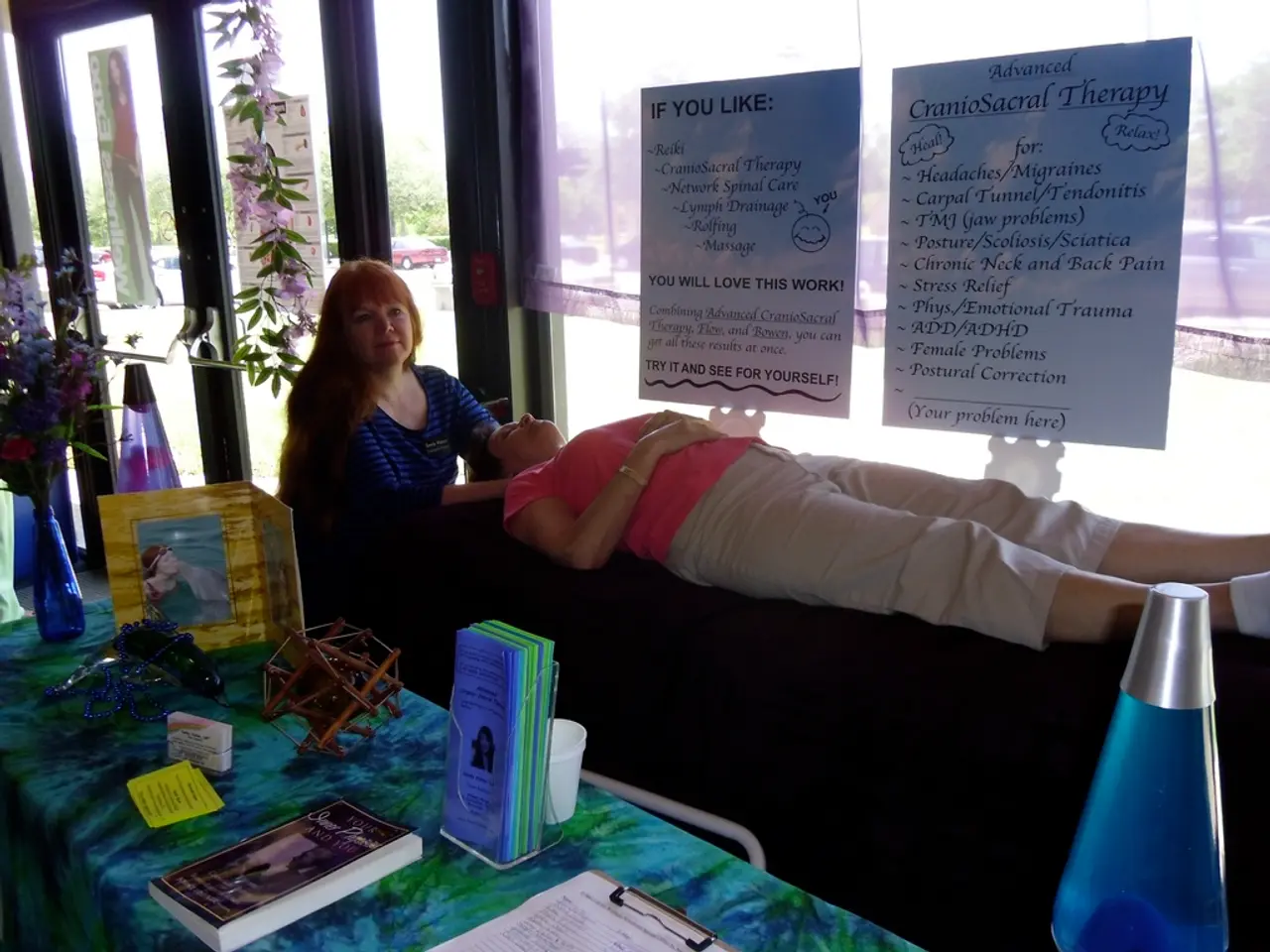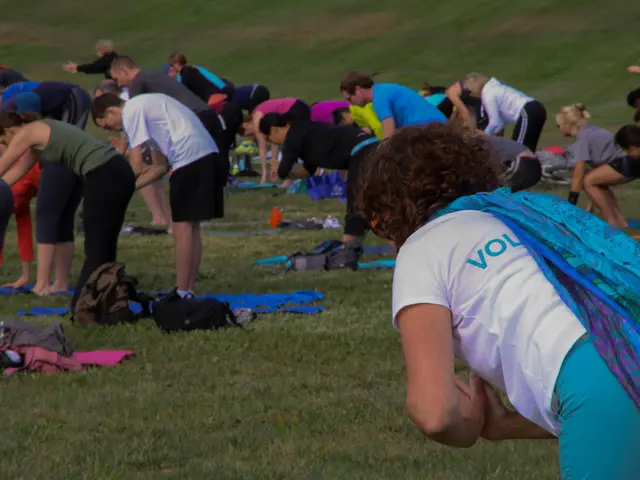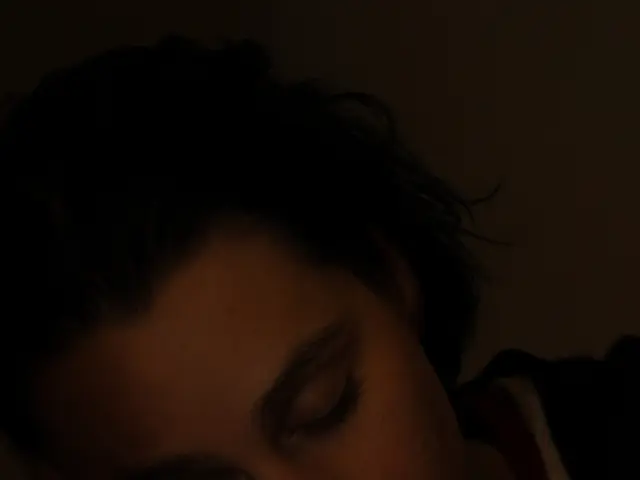Top-Rated Sun Lamps: Enhancing Vitamin D Levels, Combating SAD, and More Benefits
In the battle against Seasonal Affective Disorder (SAD), a form of depression related to seasonal changes, SAD lamps have emerged as a reliable, non-pharmacological treatment option. These devices, also known as sun lamps or light boxes, work by simulating natural sunlight to help regulate circadian rhythms and serotonin/melatonin production.
SAD lamps are suitable for wall mounting and come in various sizes, with the Aura Day Light Lamp being 14 inches high, 8 inches wide, and 2 inches deep, costing $139.99. It provides an impressive 10,000 lux at a short distance, making it an effective choice for those battling SAD.
To use a SAD lamp effectively, a person should sit in front of it first thing in the morning, use a fluorescent light source with a diffusion screen, ensure 30 minutes of exposure to 10,000 lux, angle the lamp to -30 degrees away from their line of sight, sit 12-24 inches away from the lamp, not look directly at the bulb, start using the lamp in the fall and continue its use through to spring.
Beyond SAD, some studies and user reports suggest benefits for non-seasonal depression, though evidence is less robust. SAD lamps can also help reset the body’s internal clock, which may improve sleep, energy, and mood—especially for shift workers or individuals with irregular routines.
Modern LED-based SAD lamps deliver bright, flicker-free light with full-spectrum emissions, and some models offer infrared or adjustable color modes. However, claims around air purification or "nutrient light" lack strong scientific support. It's essential to note that Pink Himalayan Salt Lamps, often marketed for relaxation and sleep, are not considered true SAD therapy devices, and their benefits are anecdotal.
When choosing a SAD lamp, safety considerations are crucial. High-quality SAD lamps should emit no or negligible UV radiation, reducing risks of skin or eye damage. Glare levels vary, so select models with low glare to avoid eye strain. Look for lamps with built-in temperature regulation to prevent overheating, especially during prolonged use. User sensitivity is also an important factor, with customizable intensity settings and gradual exposure helping build tolerance.
The price range for SAD lamps varies, with entry-level LED panels costing between $30 and $100, mid-range LED therapy lamps priced between $100 and $250, and high-end/clinical-grade models costing $250 and above. Each category offers different features and lux output, with the Verilux HappyLight Luxe, Sperti Vitamin D Sunlamp, Circadian Optics Lumine Light Therapy Lamp, and Philips SmartSleep Light Therapy Lamp being popular choices.
In conclusion, SAD lamps are a well-established, non-pharmacological option for SAD, with a range of products meeting different needs and budgets. Safety and efficacy are maximized by choosing devices with proven brightness, minimal glare, no harmful UV, and robust build quality—features typically found in mid- to high-end LED models. It's important to note that SAD lamps should not be used by individuals with light sensitivities, bipolar disorder, diabetes, or eye health conditions. Consult a healthcare provider before use, especially if you have a vitamin D deficiency or a history of light sensitivity, bipolar disorder, diabetes, or eye health conditions.
- Some studies suggest potential benefits of SAD lamps for non-seasonal depression, but the evidence is less conclusive.
- SAD lamps can help improve sleep, energy, and mood for shift workers or individuals with irregular routines by resetting their body’s internal clock.
- Modern SAD lamps deliver bright, flicker-free light with full-spectrum emissions, and some models offer infrared or adjustable color modes.
- However, claims around air purification or "nutrient light" in SAD lamps lack strong scientific support.
- High-quality SAD lamps should emit no or negligible UV radiation to reduce risks of skin or eye damage.
- The Verilux HappyLight Luxe, Sperti Vitamin D Sunlamp, Circadian Optics Lumine Light Therapy Lamp, and Philips SmartSleep Light Therapy Lamp are popular choices in SAD lamp selection.
- The price range for SAD lamps varies, with entry-level LED panels costing between $30 and $100, mid-range LED therapy lamps priced between $100 and $250, and high-end/clinical-grade models costing $250 and above.
- When choosing a SAD lamp, safety and efficacy are maximized by selecting devices with proven brightness, minimal glare, no harmful UV, and robust build quality.
- It's essential to note that SAD lamps should not be used by individuals with light sensitivities, bipolar disorder, diabetes, or eye health conditions.
- Consult a healthcare provider before using a SAD lamp, especially if you have a vitamin D deficiency, a history of light sensitivity, bipolar disorder, diabetes, or eye health conditions.
- In the realm of health-and-wellness and mental-health, science continues to explore the possibilities of SAD lamps as well as other therapies-and-treatments to combat various diseases, such as cancer, psoriatic disease, Crohn's disease, arthritis, macular degeneration, and ulcerative colitis, that often involve deterioration or degeneration in the body.




